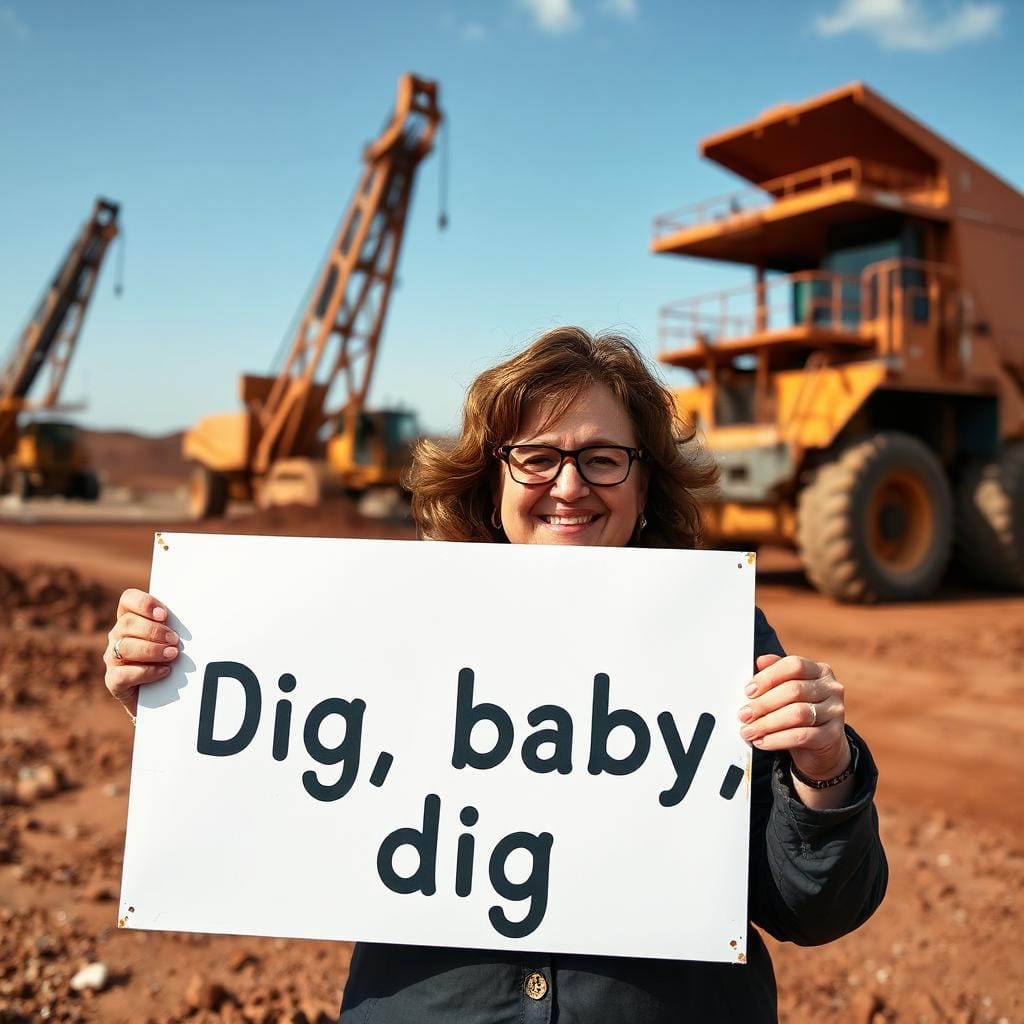
By Elke Porter | WBN News Global | May 1, 2025
As Australia approaches its May 3, 2025, federal election, economic concerns dominate voter sentiment, with mining magnate Gina Rinehart’s call for a Trump-style economic overhaul stirring debate.
Rinehart, Australia’s richest woman with a $30 billion fortune, urges slashing government spending, deregulating business, and boosting fossil fuel production. “Dig, baby, dig,” she declared at a Sydney mining conference, echoing Trump’s energy mantra and advocating withdrawal from the Paris Agreement to prioritize coal and gas.
Her company, Hancock Prospecting, tripled donations to the conservative Liberal-National Coalition, led by Peter Dutton, to A$500,000 in 2024, pushing for lower taxes and a leaner public sector.
Dutton’s economic plan centres on cutting 41,000 non-essential government jobs and incentivizing natural gas and nuclear power to curb energy prices, which surged 12% last year per ABS data. He also proposes a Ministry of Government Efficiency, inspired by Rinehart’s vision, to slash “red tape” costing businesses $300 billion annually, according to the Productivity Commission.
However, voters worry about global trade disruptions from Trump’s tariffs, which could hit Australia’s A$500 billion export market, particularly iron ore and LNG, per Treasury forecasts.
The centre-left Labor Party, led by Prime Minister Anthony Albanese, counters with a focus on renewable energy and housing affordability. Labor’s A$50 billion green investment plan aims to lower power bills by 20% by 2030, while its First Home Buyer Guarantee has helped 40,000 households since 2022, per Housing Australia.
Albanese warns Dutton’s fossil fuel may push the risk of long-term economic isolation as global markets shift to net-zero. A recent RedBridge-Accent poll shows Labour leading 53%-47%, driven by young voters facing rent hikes averaging 15% in Sydney and Melbourne. But, what once appeared to be a globally co-ordinated movement of heading towards zero waste in 2050 or 2060 is fracturing.
The early momentum behind net-zero policies, fuelled by optimism that government incentives and public support would ease the transition, is slowly crumbling in many western nations. As energy prices climb and affordability concerns grow, public opinion has become noticeably more cautious.
Consumers facing higher heating bills and fuel costs are beginning to question the personal price of aggressive climate action in both Canada and Australia. Newly elected Prime Minister of Canada Mark Carney is closely tied to the Glasgow Financial Alliance for Net Zero (GFANZ). He co-chaired GFANZ, launched in April 2021 ahead of COP26, to unite financial institutions—banks, asset managers, insurers, and others—toward aligning their investments and lending with net zero emissions by 2050.
However, GFANZ has faced challenges, some of which reflect on Carney’s leadership. Several major U.S. and Canadian banks, like JPMorgan, Bank of America, and four Canadian banks (BMO, National Bank, TD, CIBC), exited the Net-Zero Banking Alliance (NZBA), a GFANZ subgroup, citing strategic realignment or legal risks. It will be interesting to see what Mark Carney plans to do in Canada to get things back on track and how he will keep the entire country united in supporting climate action.
A diverse nation like Canada—where fossil fuel-dependent regions like Alberta often clash with greener provinces like British Columbia—requires navigating economic trade-offs and political divides. Policymakers must ensure climate strategies don’t disproportionately burden certain communities while still maintaining public and industry support.
A similar challenge looms in Australia as it heads toward its own national election. There, the debate also centres around balancing economic growth with environmental responsibility. Mining magnate Gina Rinehart’s “dig, baby, dig” ethos and her company Hancock’s $1.3 billion U.S. energy portfolio underscore her commitment to fossil fuel expansion.
Yet voters across the spectrum appear wary. “We need jobs, not just mining profits,” said Sarah Lim, a 38-year-old small business owner in Perth.
As Australians grapple with cost-of-living pressures and global trade uncertainty, their choice—between Rinehart’s deregulation-driven resource agenda and Labour’s push for green stability—mirrors the kind of economic-environmental tension Canadians and even Americans are already wrestling with.
Australian Federal Election 2025: Key Details
Election Date: The Australian federal election is scheduled for Saturday, May 3, 2025.
Polling Booth Information:
Accessibility: The AEC provides a list of accessible polling places and offers translation and braille services. Voters with disabilities can also use the AEC’s telephone voting service for early voting.
Finding Polling Booths: Visit the AEC’s website and select “Where can I vote?” to find polling places. For early voting, choose the “before election day” option to locate one of over 400 early voting centers nationwide.
Locations: Polling booths are typically set up at local schools, churches, community halls, or public buildings across each state and territory. Specific locations will be confirmed closer to election day on the Australian Electoral Commission (AEC) website (www.aec.gov.au). You can search for polling places by suburb, postcode, or electorate.
Voting Hours:
- Early Voting: Available from Tuesday, April 22, to Friday, May 2, 2025, at early voting centers. Hours vary by location, and centers are closed on Anzac Day (April 25). Check specific hours on the AEC website.
- Election Day: Polling booths are open from 8:00 AM to 6:00 PM on May 3, 2025. If you’re in line by 6:00 PM, you can still vote.
#Aussie Economy 2025 #Dig Baby Dig #Rinehart Economy #Energy Costs #Election Fallout #Green Jobs #WBN News Global #Elke Porter
Connect with Elke at Westcoast German Media or on LinkedIn: Elke Porter or contact her on WhatsApp: +1 604 828 8788


